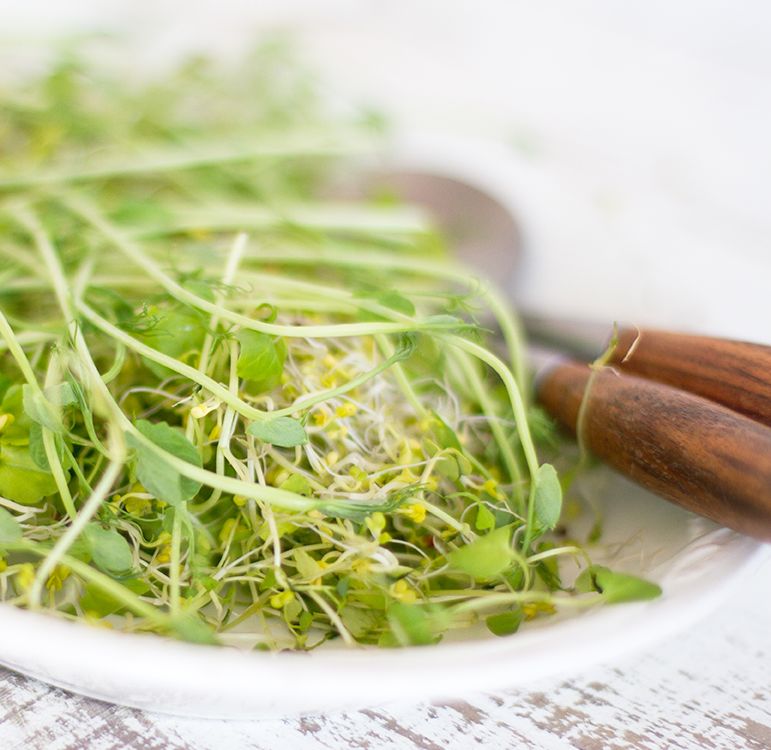Growing greens year-round, even in the winter is possible! In fact, it’s more accessible than you might think because some plants can be grown indoors quite easily. For those who really love gardening, here are a few tips on how to get a little greenery in your home for a small price!
Sun and more sun!
In a Nordic country like ours, the sun is always playing hide and seek in the colder months. The lack of sunlight is the biggest challenge you will face with your winter gardening. Even a large south-facing window isn’t always enough for many vegetables. If growing tomatoes and cucumbers when the cooler temperatures set in seems a bit too adventurous, there are other simple and scrumptious possibilities out there!
Sprouts
If you’re a beginner, sprouting seeds and grains is a great option because it requires very little material and no light at all. It’s the easiest way to have access to super fresh food that is rich in nutrients in the winter.
Directions:
1- Place a tablespoon of seeds in a 500 ml Mason jar and cover them with water.
2- Soak them in a dark place for about 5 hours (soak time varies depending on the type of seed).
3- Rinse the seeds. Then, cover the jar with a piece of plastic mesh or cheesecloth using an elastic band.
4- Place the jar upside down at a 45-degree angle so that the water drains completely. Rinse twice a day.
5- They are ready to eat when the roots are between 1 and 4 cm long (between 2 to 7 days).
Shoots
Shoots can be harvested after two weeks when small leaves have appeared. They will be crunchy and delicious! There are a few extra things that you’ll need: a sunny window (or a grow light) and topsoil.
Directions:
1- Soak seeds according to their type.
2- Fill a tray with 1 inch of soil and moisten well.
3- Sow the seeds without overlapping. Then, cover them with an additional layer of soil.
4- Place the tray near a window or a grow light. Make sure that you maintain a good level of humidity by spraying them with water daily.
5- Harvest when the shoots show their first leaves.
Best seed choices for sprouts and shoots: sunflower, buckwheat, wheatgrass, radish, pea, lentils, coriander, mustard, beet, corn.
Baby greens
Having fresh lettuce right in the kitchen: sounds like a plan! It takes a bit of time (at least 3 weeks) and you will need to invest in a grow light. But in the end, it will be cheaper than buying it in the grocery store. We tend to favour arugula, oak leaves, mesclun and curly lettuce.
Directions:
1- Repeat steps 1 to 5 as described above for the sprouts but using a grow light that is on for about 14 hours a day.
2- Pick the leaves as needed when the lettuce is ready, after about 3 weeks.
Regrow using your vegetable scraps
Many vegetables and herbs are easy to grow using leftovers. Not only is it easy, thrifty, and anti-waste, it adds a splash of colour to the kitchen. All you have to do is put your leftover veggies in a bowl of water and wait for the magic to happen.
Best vegetables to grow from scraps: Bok choy, lettuce, green onion, mint, celery, ginger, lemongrass, fennel, garlic, leek, basil.
A winter garden makes it possible to have local, nutritious and organic greens on your plate. Plus, it will spruce up your sandwiches and salads!



